When Is The Right Age To Start Swimming Lessons At Home?
Swimming is a valuable life skill for children, especially in Australia where backyard pools, beaches and waterways are common parts of daily life. Teaching kids to swim early can improve their confidence in the water, boost safety and even support physical development. But when it comes to starting swimming lessons at home, many parents wonder: what’s the right age to begin?
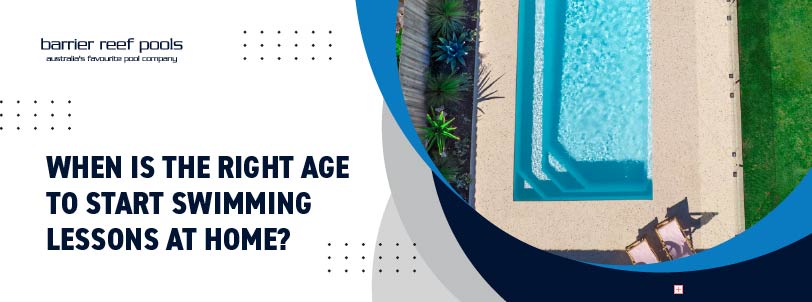
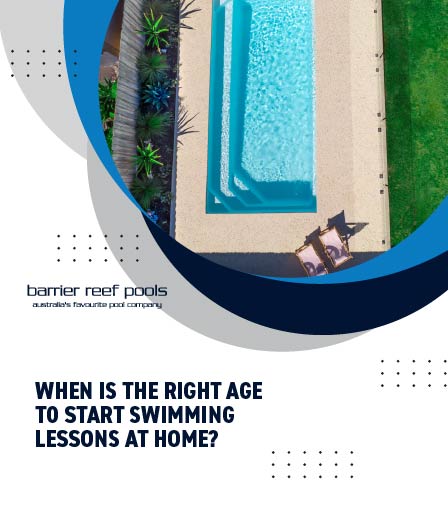
Unlike formal lessons at swim schools or community pools, home swimming lessons offer flexibility and comfort. You can work around your family’s schedule, tailor the pace to your child’s needs and create a relaxed environment that encourages learning. However, timing is important to get the most out of this experience.
This article breaks down considerations for choosing the right age to start swimming lessons at home, practical tips for parents, and how to build a safe, fun swimming routine.
Why Start Swimming Lessons at Home?
There are several benefits to beginning swimming education in your own pool:
Familiar Environment: Kids often feel safer and more relaxed learning at home, which can reduce fear of water.
Flexible Schedule: You decide when and how often lessons happen—no need to fit around class timetables.
Individual Attention: One-on-one time with a parent or carer helps build trust and focus.
Early Water Familiarity: Starting young helps children get comfortable with water, an essential step before formal swimming strokes.
At What Age Can Swimming Lessons Begin?
There’s no universally agreed “right” age, but many experts recommend starting water familiarisation as early as 6 months. This doesn’t mean formal swimming lessons, but rather gentle exposure to water through fun activities like bathing, splashing or floating with support.
Infants (0-6 months): Water familiarisation through safe, supervised bath time or gentle play. This introduces babies to water in a positive way.
Babies (6-12 months): At this stage, many parents introduce basic water safety skills, such as blowing bubbles, kicking legs, or supported floating. It’s mostly about fun and comfort.
Toddlers (1-3 years): Many swim schools begin formal lessons from 12 months, but at home you can start encouraging simple skills like blowing bubbles, reaching for toys in the water, or assisted “jump and splash.”
Preschoolers (3-5 years): This is often the best age to introduce more structured lessons at home, focusing on basic strokes, floating and water confidence.
Older Children (5+ years): If your child hasn’t had swimming lessons before, it’s never too late to start! Home lessons can still be beneficial alongside formal lessons.
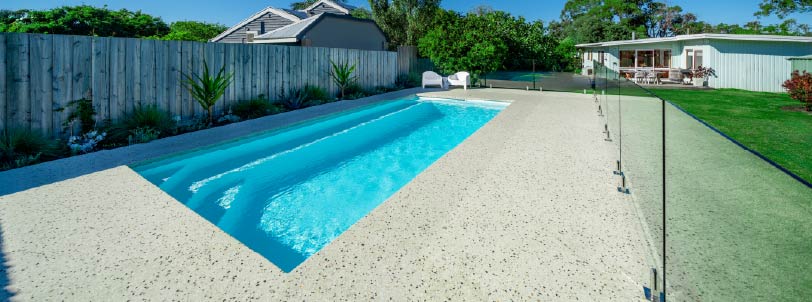
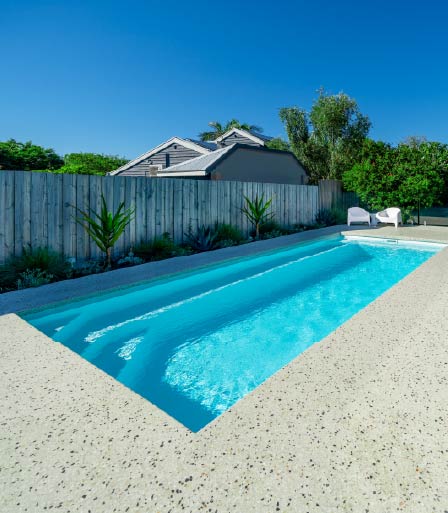
What to Consider Before Starting Swimming Lessons at Home
Before you begin, there are a few important points to keep in mind:
Pool Safety: Always prioritise safety around the pool. Supervise children closely at all times. Ensure your pool complies with local fencing and safety regulations.
Child’s Readiness: Each child develops differently. Some toddlers may be eager to learn, while others may be fearful of water. Respect your child’s cues and don’t force activities.
Parental Comfort and Skill: Parents should feel confident and comfortable in the water to teach safely. If you’re unsure, consider partnering with a qualified swim instructor for some sessions.
Equipment: Have floatation aids, toys, and safety gear handy. Age-appropriate goggles and rash shirts can make lessons more enjoyable.
Environment: Choose calm, warm days and maintain comfortable water temperature for your child.
Tips for Starting Swimming Lessons at Home
If you decide to start lessons at home, here are some practical tips to help make it a positive experience:
Keep Sessions Short and Fun: Young children have short attention spans. Limit lessons to 10-15 minutes, and finish on a high note.
Use Games and Toys: Floating toys, balls and colourful objects encourage reaching and kicking, making learning playful.
Model Water Safety: Show your child how to enter and exit the pool safely, emphasising no running or diving unless supervised.
Focus on Water Comfort First: Before teaching strokes, help your child get used to putting their face in water, blowing bubbles, and floating with support.
Use Positive Reinforcement: Praise efforts, no matter how small. Celebrate progress to build confidence.
Stay Patient: Children may take time to get used to the water. Don’t rush or pressure them.
Set a Routine: Consistent practice helps build muscle memory and water familiarity. Aim for 2-3 short sessions a week.
Teach Pool Rules Early: Simple rules like no running, no swimming alone and asking permission to enter the water are vital.
When to Seek Professional Help
Home swimming lessons work well for water familiarisation and early skills, but there comes a time when formal lessons with qualified instructors are important—especially to develop proper technique and water safety knowledge.
If you notice your child is fearful despite gentle introduction, or if you’re unsure about teaching stroke techniques, enrol in a swim school or private lessons. Professionals can provide structured programs, guidance and ensure your child’s development is on track.
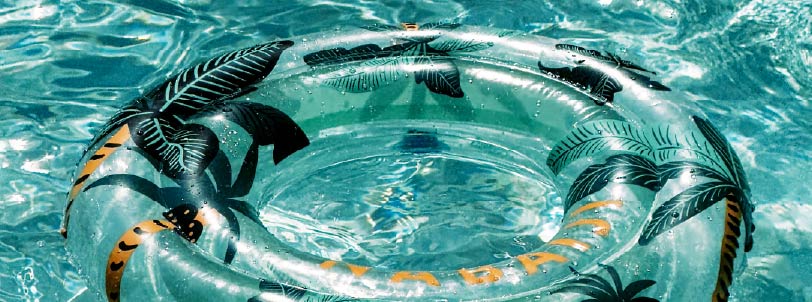
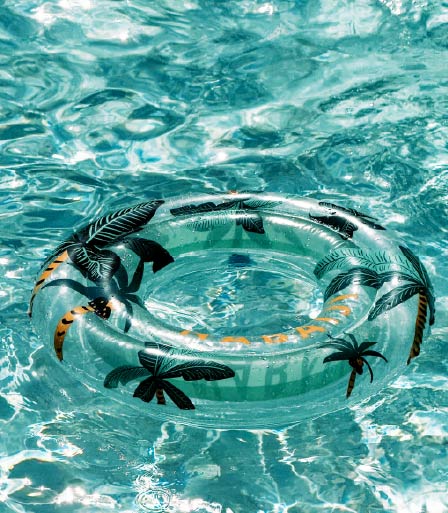
Benefits of Starting Early but Not Rushing
Early exposure to water helps children develop comfort and safety awareness. It can also foster a lifelong love of swimming and outdoor activity.
However, pushing too early or too fast can backfire—fear or resistance may develop if a child feels overwhelmed. Balancing encouragement with respect for your child’s pace creates a positive experience
What About Babies and Formal Lessons?
Baby swimming classes are widely available and popular, often starting around 6 months. These lessons focus on water familiarisation and parent-child bonding, rather than actual swimming.
If you choose to begin formal lessons this early at home, keep in mind the focus should be on play and comfort, not technique or endurance
Preparing Your Home Pool for Lessons
To make lessons safe and smooth, ensure your pool area is well-maintained:
Check the water temperature—it should be warm but not hot (around 30°C is ideal for babies and toddlers).
Keep the pool clean and clear for visibility.
Have non-slip surfaces around the pool deck.
Install a pet ramp or pool ladder suitable for children.
Provide shaded areas to protect from the sun.
Keep emergency equipment like life rings and a phone nearby.
Encouraging Water Safety Beyond Swimming Skills
Learning to swim isn’t just about strokes—it’s about understanding water safety, recognising risks and building habits that protect children in and around water.
Use lessons at home to introduce concepts like:
Never entering the pool without an adult.
Recognising pool boundaries.
Understanding the dangers of diving into shallow water.
What to do in an emergency (like calling for help).
Final Thoughts
Deciding when to start swimming lessons at home is a personal choice that depends on your child’s age, readiness and your family’s lifestyle. Starting water familiarisation from around 6 months, progressing to more formal lessons by toddler and preschool age, is a solid approach.
Home lessons offer a relaxed, flexible way to build your child’s water confidence and safety, as long as you keep sessions fun, short and supervised.
Remember, swimming is a skill that develops over time. Whether your child starts early or later, the important thing is fostering a positive attitude to water and safety that will last a lifetime.
To get a reliable and safe pool today, click on our FREE QUOTE page today to start your journey with us!
